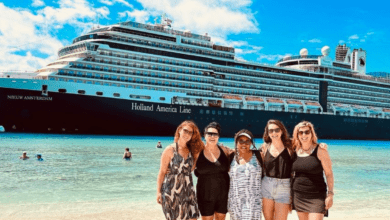On television, in theatre, on the internet and in the streets, everywhere and every day we are surrounded by millions of images that wake us up and shock us. They want to say something, to arouse the debate. Art has always had something to say about the world and today as well contemporary artists talk about societal matters that concern everyone. Does queer art exist? And how can we define it?
Many artists work in an active way on these queer questions. It takes many forms—photography, painting, music, literature, video—but is not visible enough. The goal of this series is to illuminate the pieces of artists who work on LGBT subjects. Some of them are internationally known; others are less visible on the contemporary art scene. But all of them use images as a medium to start a dialog around this major question on the society of today and tomorrow. One of the most significant artistic representative of this LGBT cause and for more than 25 years now is American photographer Catherine Opie. Since the early ‘9os, Catherine Opie has developed a huge artwork composed of series of studio portraiture, landscape, street, urban and architectural photography.
I discovered the scope of her work during a beautiful survey at the Guggenheim Museum of New York in 2008. I have been totally smitten with the power of her imagery. Her series Being & Having (1991) and Portraits (1993-97) gather pictures of her friends. Opie here celebrates the queer community through studio portraits with colored backgrounds. Strict portraits from Being & Having don’t hide anything; they, on the contrary, show everything that is possible to see. Within a tight frame, the models stare the camera and the viewers, dressed up with overuse of exaggerated masculine props. Everything here testifies of an obvious evidence: Catherine Opie enforces lesbian identity, its heterogeneity and complexity. In the Portraits series also, the photographer documents through gorgeous intimate portraits inspired from classical era the SM lesbian community. Ambiguity predominates in those unknown bodies and yet the self-assurance is more than existing.
In her auto-portraits as well we find the concept of the body as a vector of ideas, as an object of affirmation, as a way to enforce identity. In front of a classical style pattern, the artist turns her back to the viewers. Her skin has been scarified with a scalpel and used as a canvas to show a domestic lesbian scene in the style of a child drawing. The duality of Self-Portrait / Cutting (1993) is fascinating. The softness and naivety of the drawing clash with the violence of the message-as a silent screaming-red of a still liquid and tepid blood. Speak in order to offend. Offend through images to be seen. In 2004 Catherine Opie creates Self-Portrait/Nursing, another self-portrait as a reply to the first one. Naked again but this time from front, she holds an infant in her arms. In the style of a classical painter, the photographer renews the Virgin and Child theme, iconic figure of occidental art history. Her dreams to build a domestic home have finally come true. But her personal history and her fights for the LGBT community last as well as the almost invisible “Pervert” scar on her chest.
In 1995, Catherine Opie gets out of her studio and travels all over the United States to take pictures of lesbian couples in their private home. It’s the Domestic series (1995-98). Through this documentary piece she keeps working on the queer community and gets particularly interested in the construction of a domestic home. What is a home and what are its components? In this series the photographer offers us the possibility to apprehend the family with a different view; she redefines family’s codes. These women are photographed with natural postures in their leaving room, kitchen or bedroom. They sometimes look at the lens and are every time shown in their intimate daily life. Catherine Opie reveals these American homes. She makes them visible and pays them a tribute in this beautiful series that is full of benevolence and that reflects her ongoing study of the society of today.
The work of Catherine Opie is currently on view in three museums of Los Angeles: LACMA, MOCA and Hammer Museum.





